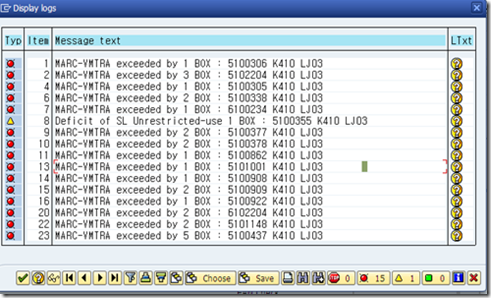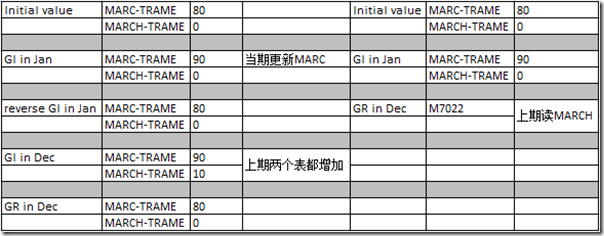被折磨了两天的一个message
STO流程:
ME21N生成STO—>VL10B生成outbound delivery—> VL02N做GI –> MIGO针对外向交货单做GR
M7022:
逻辑:
GI在当期的话, MARC-TRAME更新
GI在上期的话, MARC-TRAME和MARCH-TRAME都要更新
GR在上期的话, 同时读取MARC-TRAME和MARCH-TRAME中的值
故: GI, GR都需在上期. 假设GI在当期,GR在上期.可能会遇到M7 022(因为MARCH-TRAME中的值不够)
(本例中, Jan.为当期, Dec. 为上期)
客户忘记将本期做的GI, reverse成上期了..
因此可能会出现这样的情况:
凭证A, 在上期发货177箱, MARC-TRAME 177, MARCH-TRAME 177
凭证B, 在当期发货30箱, MARC-TRAME 207, MARCH-TRAME 177
凭证B, 在上期收货30箱, MARC-TRAME 177, MARCH-TRAME 147
凭证A, 在上期收货177箱, 发现MARCH-TRAME数量不够, M7022报错..
补充一下STO在PS中的运用:
When you have a stock transport scenario working with stock transport orders from one plant to another, you need not to have requirements in both plants from the network, but you need only to have
one requirement from the network activity in the receiving plant. MRP will create the stock transport order and a settlement element for that requirement.
When the delivery for that stock transport order is created and posted GI, the requirement in the sending plant for that material will be reduced according to the delivered quantity.
When you create a requirement from the activity assigned to the sending plant too, this requirement will be seen as an additional one, which has nothing to do at all with that stock transport order.
When you create one requirement from the network in the sending plant and one in the receiving plant, these are two independent requirements. There is no way to 'link' them.
http://help.sap.com/saphelp_47x200/helpdata/en/4d/2b90dc43ad11d189410000e829fbbd/content.htm

